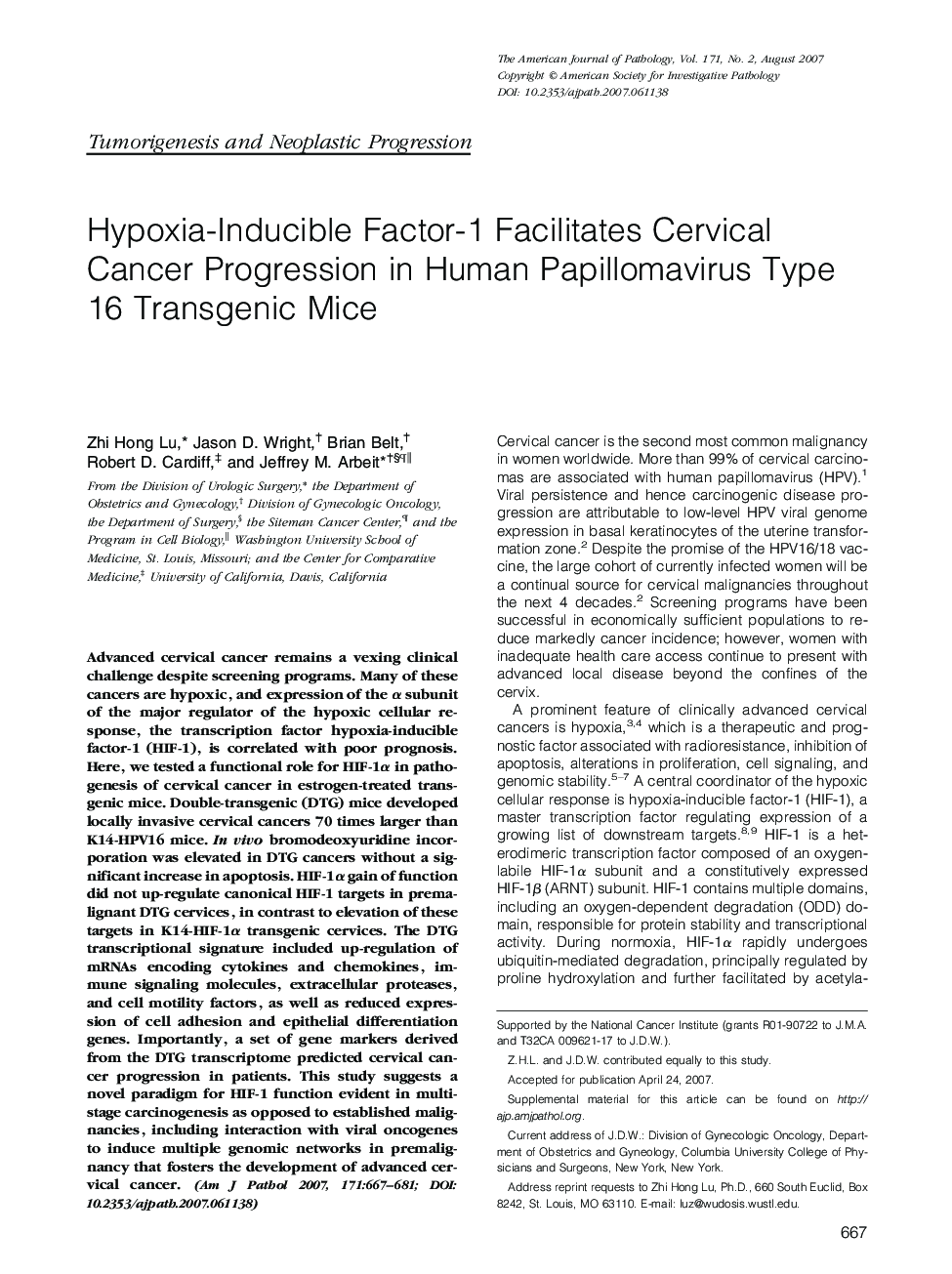| Article ID | Journal | Published Year | Pages | File Type |
|---|---|---|---|---|
| 2866719 | The American Journal of Pathology | 2007 | 15 Pages |
Advanced cervical cancer remains a vexing clinical challenge despite screening programs. Many of these cancers are hypoxic, and expression of the α subunit of the major regulator of the hypoxic cellular response, the transcription factor hypoxia-inducible factor-1 (HIF-1), is correlated with poor prognosis. Here, we tested a functional role for HIF-1α in pathogenesis of cervical cancer in estrogen-treated transgenic mice. Double-transgenic (DTG) mice developed locally invasive cervical cancers 70 times larger than K14-HPV16 mice. In vivo bromodeoxyuridine incorporation was elevated in DTG cancers without a significant increase in apoptosis. HIF-1α gain of function did not up-regulate canonical HIF-1 targets in premalignant DTG cervices, in contrast to elevation of these targets in K14-HIF-1α transgenic cervices. The DTG transcriptional signature included up-regulation of mRNAs encoding cytokines and chemokines, immune signaling molecules, extracellular proteases, and cell motility factors, as well as reduced expression of cell adhesion and epithelial differentiation genes. Importantly, a set of gene markers derived from the DTG transcriptome predicted cervical cancer progression in patients. This study suggests a novel paradigm for HIF-1 function evident in multistage carcinogenesis as opposed to established malignancies, including interaction with viral oncogenes to induce multiple genomic networks in premalignancy that fosters the development of advanced cervical cancer.
